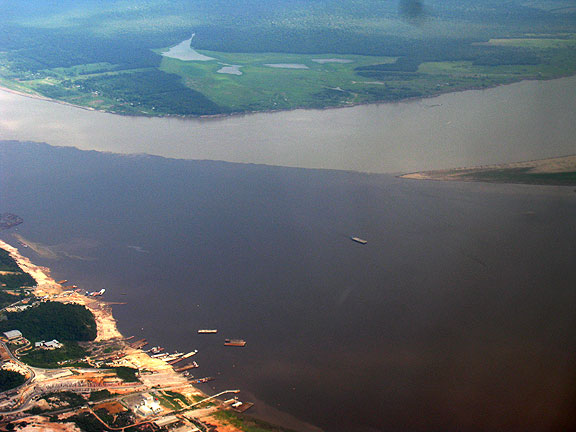
From the plane: the meeting point of the Rio Negro and Rio Solimoes, which going east from here become the Amazon River.

Famously, the yellow muddy Rio Solimoes and the dark clear Rio Negro come together at this point where Manaus is, but the two waters don't mix much for a number of kilometers, proceeding side by side.
I spent five days in the Amazon! I was invited to speak at TEDx Amazonia November 6, a locally produced TED event. I’m going to write about the conference and the talks in the next entry, but this first post will be about travelling there and being in the hotels and climbing a big Amapá tree overlooking the Rio Negro (one of the two great tributaries that meet just east of Manaus to form the Amazon River proper). Somehow it hadn’t entered my consciousness that the Amazon basin was suffering its worst drought in recorded history, and the rivers of the greater basin are several meters lower than normal, to the point that vast areas of riverbed have been exposed to the air for the first time in many locals’ lives. We had to walk a lot to reach the boats that moved us from the hotel in Manaus to the surreal Amazon Jungle Palace Hotel, and the long distances we covered were across wide sandy beaches and across hundreds of meters of caked mud.

I arrived in the middle of the night of November 4, and this was my first view out my hotel window when I awoke. That large green triangular area should be under water.
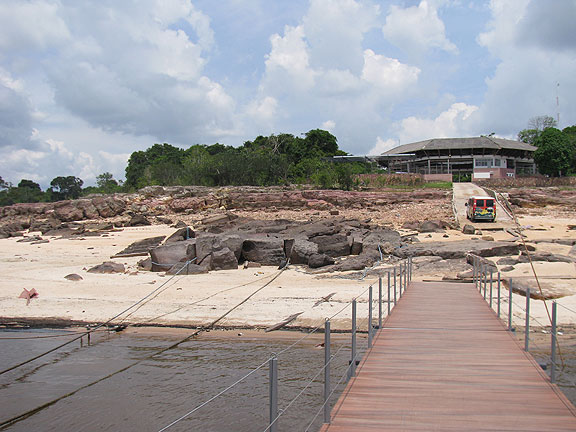
We embarked here to go upriver to the locale where the conference was to be held. As you can see, the river is very low, with the normal riverbank 20-30 feet higher. As a result, many temporary docks have been erected everywhere, and much climbing and walking is required to access river boats.
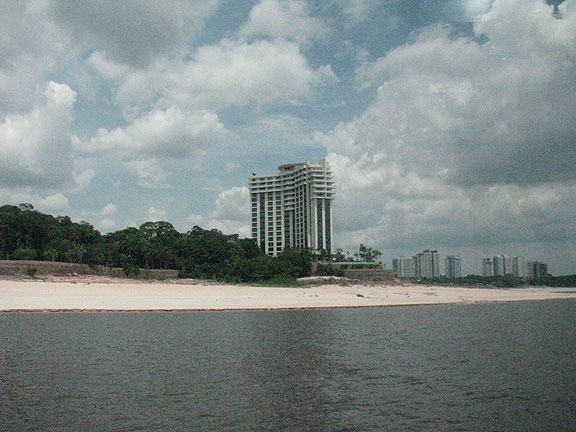
This is the hotel that I took the photo from my window... I stayed here the first and last nights, part of the general luxury to which I was treated during this quick visit.
After our ferry departed, we looped downriver to stay in the deeper channels, taking us near this bridge under construction, which made me think of the moniker “bridge to nowhere” but also seemed quite ominous. Once the bridge is built, urbanization and industrialization on the other side of the river cannot be far behind. No one seemed to know what the big plans are, but surely there are companies and investors who are already fully engaged in projects that will benefit from this public infrastructure.
I was on the fabled “TransAmazonica Highway” 21 years ago, riding from Belém to Altamira a thousand miles east of here, but according to the people I spoke with, large stretches of the “highway” are still mud tracks through the jungle, as they were two decades ago (in 1989, we participated in a typical Amazonian bus ride, getting out to push it out of the mud several times during a rainy night of travel). It’s also true that the roads have led to systematic and devastating deforestation so the bridge portends a new acceleration of that process too.
After we made it upriver in about 40 minutes, Manaus still barely visible in the distance, we disembarked from the ferry on a small dock far removed from a wooden plank walkway disappearing into the forest. We had to walk across a long stretch of exposed river bottom on boards to get to the green walkway, and then over a short forested knoll, before emerging at the lost corner where the Amazon Jungle Palace Hotel is. Immediately we were struck by the incongruous sight of a fancy hotel that could be in Florida or the Caribbean or Hawaii, sitting like an ocean liner that has run aground in a baking forest clearing from which the water has drained away. Fitzcarraldo came quickly to mind, the quixotic Herzog film about the madman (played brilliantly by Klaus Kinski) who drags a huge riverboat over a tall Amazonian hill to move it from one river to another.
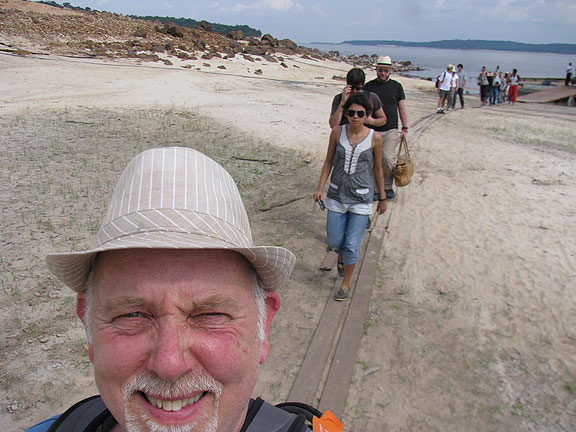
Here we are trekking across the drought-stricken "beach" to cover a quarter mile to the hotel. Normally the boats would have been able to take us to the front porch of the hotel.
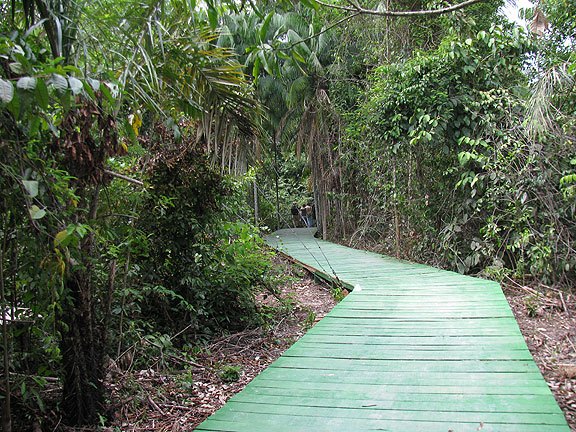
This long green boardwalk bookended our experience at the Amazon Jungle Palace, as we entered in blazing heat and left on Sunday the same way, in damp darkness amidst a cacophony of frogs and bugs.
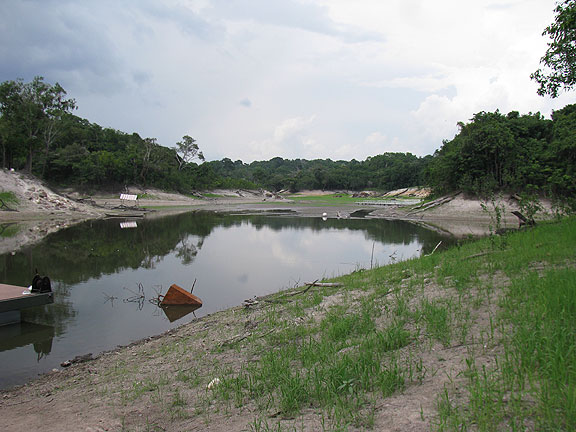
The view from the front of the hotel. The white framed structure laying in the mud in the distance is usually the fishing pen for the Hotel's visitors.
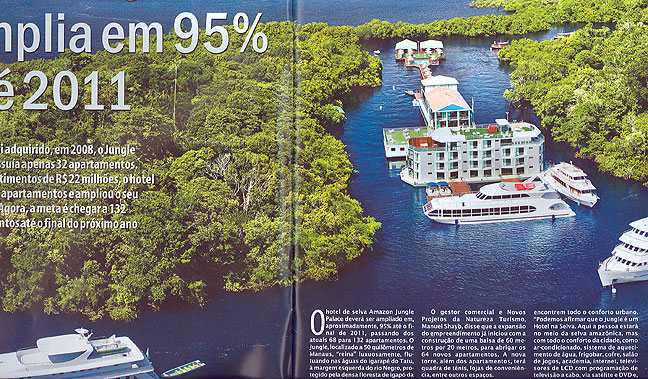
From a local business magazine, you can see a somewhat smaller Amazon Jungle Palace Hotel being served by multiple ferries while floating in high waters; quite different than we found it!
Warning signs urged us not to go for a swim in this shallow muddy murk, not that anyone really wanted to. Later when we saw them feeding an alligator a rack of ribs any lingering thoughts of giving a try were dispelled. There were two nice swimming pools anyway, and we did get to pass some late nights in and around the pool that had a bar next to it. I was among a small posse of early arriving speakers (we would be 50 speakers and 250 audience members, all hand-picked) so we got hang out and get to know each other. Here we were on the first boat ride.
On Friday we were briefed on the structure and expectations of the event, as well as sitting through a useful exercise in which we each took turns giving our presentation in one-on-one teams, first in 3 minutes, then 2, and then 1. Most of us actually had 10 minutes to present, and some had as many as 18, so this forced us to cut to the chase, without notes or crutches of any sort. Not too hard for me, but still, it was extremely helpful and a good confident booster. Because even though I knew what I was going to do, I felt more at ease about it after doing this.
We had lunch, an incredibly abundant and delicious repast consisting of three hot courses and at least four or five salads and sides, followed by 4-6 desserts. Prepared by the Amazon Jungle Palace Hotel staff, this was served us twice a day Friday, Saturday and Sunday! My favorite was Pirarucu, an Amazonian fish that has its own delicious flavor, a white firm fleshy fish without bones, prepared perfectly! We had other ones too, but this was hands-down my fave. And the dessert buffet was really dangerous! Flan, coconut cream pudding, various jello/fruit combos, two or three kinds of cake (well, at least two or three kinds of filling and frosting on a basic sponge cake)”¦ We all felt incredibly well fed, actually over fed!
The organizers announced three possible tours we could sign up for: to a local indigenous village, a tour of Manaus, and a tree climbing experience. The first two failed to attract anyone so for seven of us who wanted to do something and didn’t mind spending $125, we went off to climb a tree. It was hosted by a local Eco-tour company owned by Eduardo, who took us in a speedboat downriver about halfway back to Manaus. We had to get off the boat a long way from where it usually puts off tree climbers, and hike across almost a kilometer of exposed riverbed in super humid 100 degree weather.

Zach Lieberman and Geraldine Juarez behind me on the ferry. The photos of me climbing the tree were taken by them.
Locals were also walking along our path, dragging huge quantities of goods back to their village. When we made it to the trees we were all incredibly thirsty and quickly finished our water. Lucikly one of the lndians was glad to sell us more water and we asked him to bring us 15 more bottles (one of the craziest parts of this whole trip is the dependence in the hotel and in the local communities on tiny 300 ml plastic bottles of fresh water” what an ecological idiocy!). We got to the Amapa tree, a big 120-foot tree with slightly reddish leaves, in the midst of a fairly dense forest, and our new supply of ice water got there moments later. A couple of our group couldn’t stop drinking it and it was almost all finished in five minutes. More was delivered later, so apparently there was no shortage nearby.
Time to climb the tree. I didn’t know what to expect but once there we were met by a thick rope hanging down from 100 feet up in the tree where Eduardo’s associate was far above us. We’d all had to carry backpacks from the boat which had helmets, harnesses, and ropes (pretty dang heavy!), and while we were recovering from our heat exhaustion and thirst, they were busy hoisting the ropes into the tree. Soon we were strapping in and shown how to use the rope clamps. I went first. It looked so easy! I couldn’t believe how hard it turned out to be! But we all made it to the top.
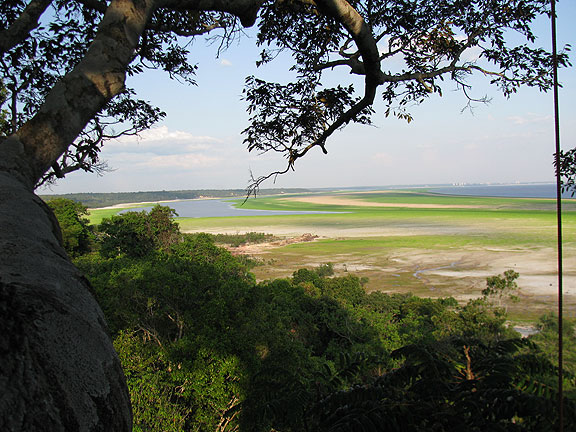
View from the treetop towards Manaus in distance. Most of what can be seen here should be under water, and has been exposed for the first time in memory due to the drought.

On the left: I felt like hell by the time I got to the top, a combination of the searing heat and humidity and that I had the wind knocked out of me every time I pushed up another notch; on the right: a few minutes later, I felt a lot better!
It was an exhilarating but exhausting experience. The harness clamped around my stomach in addition to my upper thighs, so every time I hoisted myself up the air would be squeezed out of my diaphragm and after two hoists I was gasping for breath. Combined with the oppressive heat and humidity, it was a miracle that I made it, and I wasn’t in the worst shape. Along for the ride was Aaron and Jennifer (from SF, he did one of the crowd-sourcing art presentations, she was accompanying him), biologist Joan Roughgarden (author of “Evolution’s Rainbow,” who now lives in Hawaii but in 2000 ran in the first district elections in SF for the District 6 seat that Chris Daly won), the Finns Simo and Roobe (happiness specialists!), Zach Lieberman (a brilliant artistic technologist or technological artist), Geraldine Juarez (lively, funny, smart generalist), and Paul Bennett (creative director for IDEO in London). Jeri and Paul stayed on the ground and Zach went as far as his fear of heights would allow him (which was pretty far) and the rest of us made it into the tree. We had a hurried walk back as the darkness fell and arrived to the Hotel where the crowd was beginning to swell, dinner was being served, and drinks and swimming would fill the rest of the evening.
Sunday night, after two days of 50 speakers, we were all being transferred back to Manaus. It felt like an exodus of refugees as we waited for a heavy thunderstorm to pass before making our way in darkness and the cacophony of frogs and bugs along the long walk to the boats, most of us now pulling our own luggage. Much confusion prevailed at the docks but we all were eventually assigned to a boat and in the stifling post-storm mugginess, were brought back to the hotels we were booked into at the edge of Manaus.
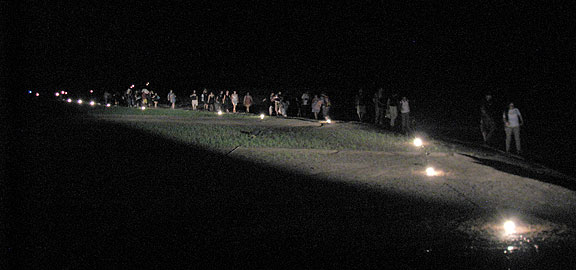
We felt like refugees being herded from a crisis, crossing the dried up riverbottom at night, under spotlights, to get the boat ride back to Manaus. It was a great ending to a fascinating weekend!
The volunteers who organized our stay in the Amazon did a stellar job. I felt really well taken care of the whole time, in fact, part of what I’ll write about in the next entry is the euphoria that comes with being given such special treatment, such blatant privilege. We lacked for nothing. Plus, from the time I got off the plane until I transferred from a domestic flight to my international flight home in Sao Paulo, I never had to worry or organize anything for myself. Everything was taken care of, an experience I’ve never had before! Thanks to the friends, new and old, who gave me and the rest such a memorable and surreal and provocative weekend together!
Lastly, since I don’t have a full presentation to go with these photos, here are some images from the storied Teatro Amazonas, the famous 1896 Beaux Artes opera house built in the heart of the jungle during the Rubber Boom. It’s fully restored now and is the major tourist attraction in Manaus, which by all accounts is a pretty uninteresting city (our ride through town in taxis confirms that impression, though we saw very little of the city).

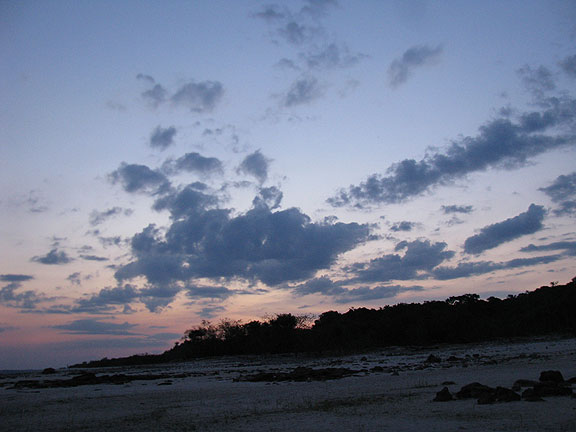
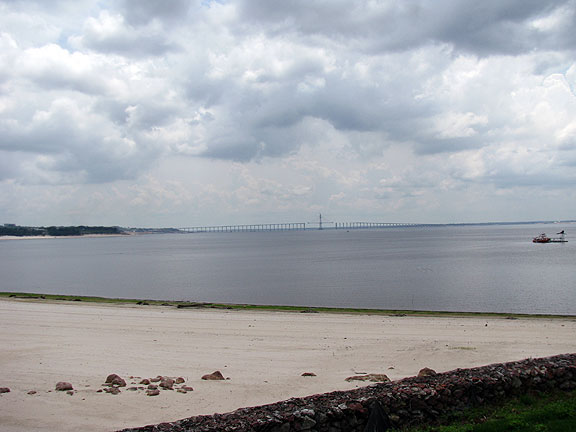
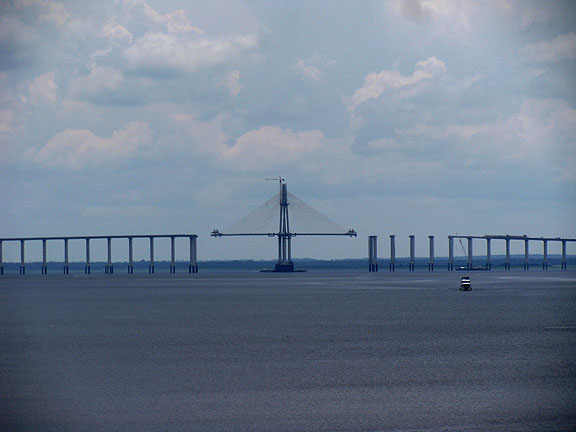
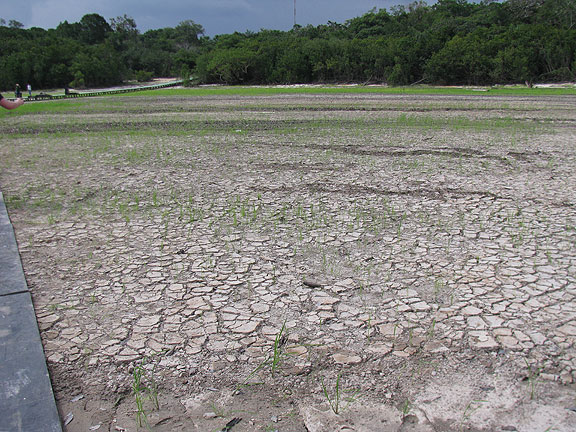
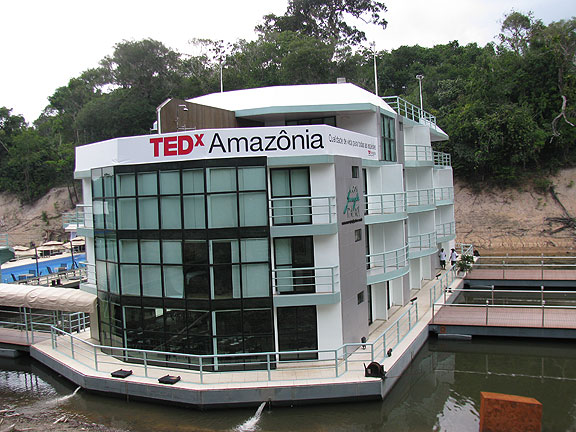
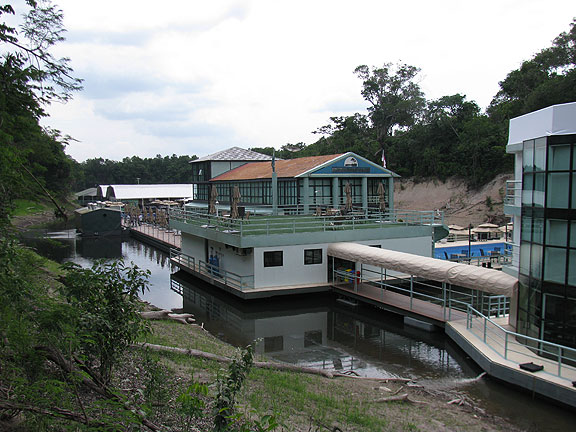
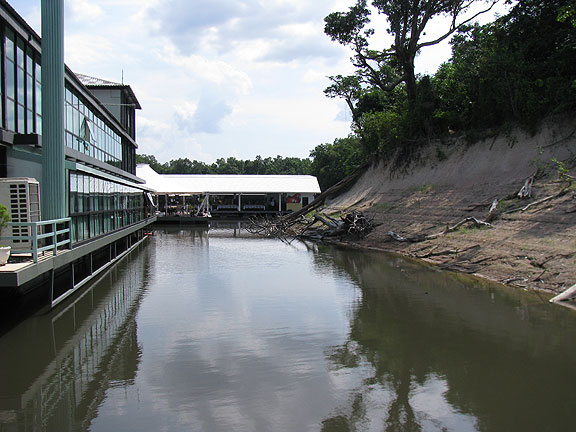
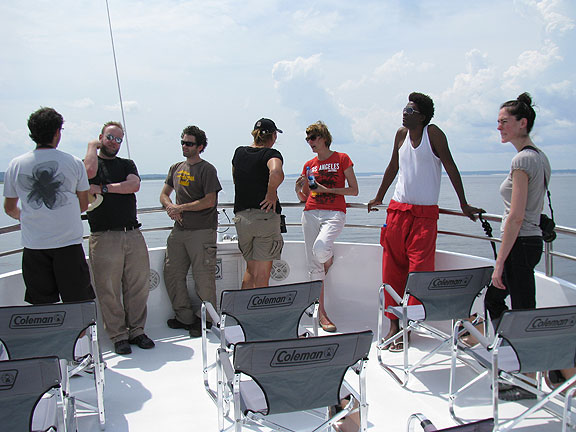
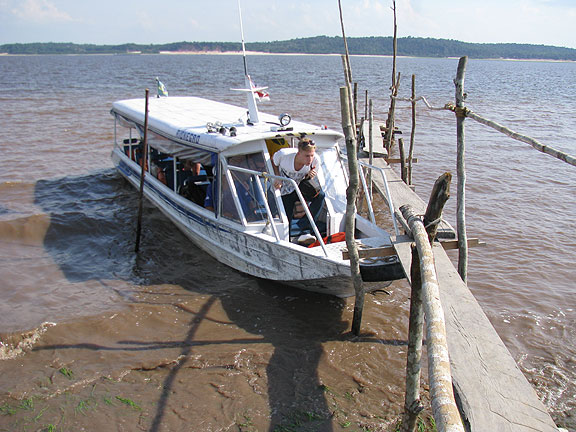

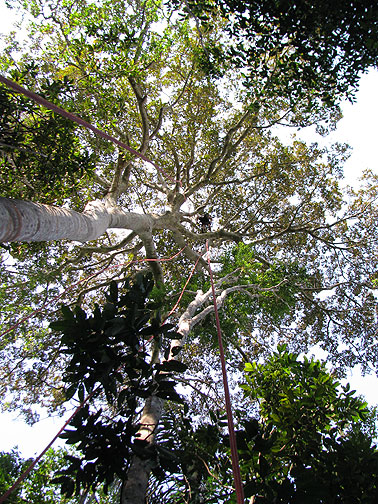
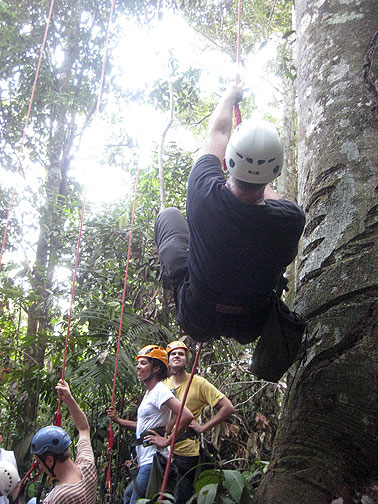
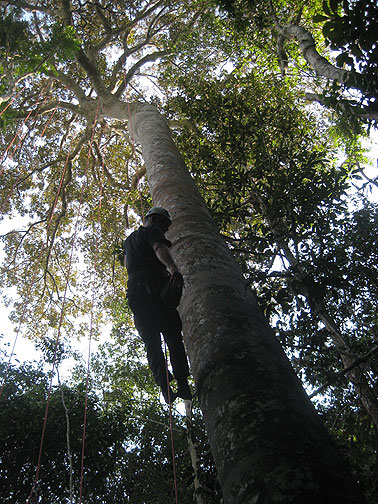
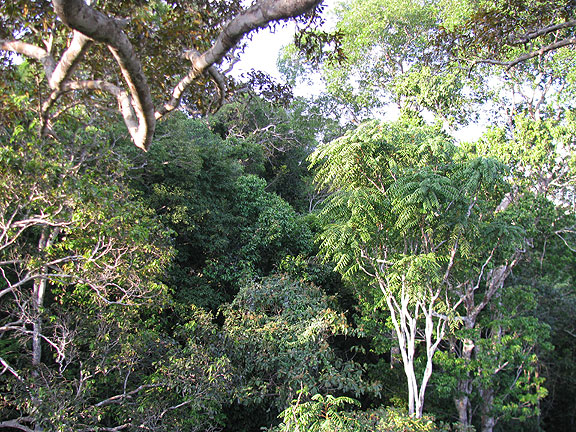

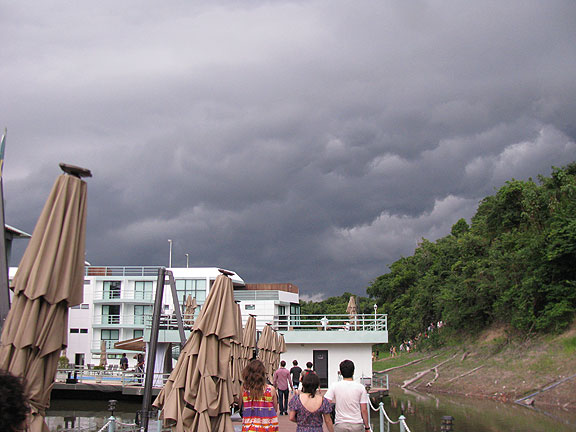

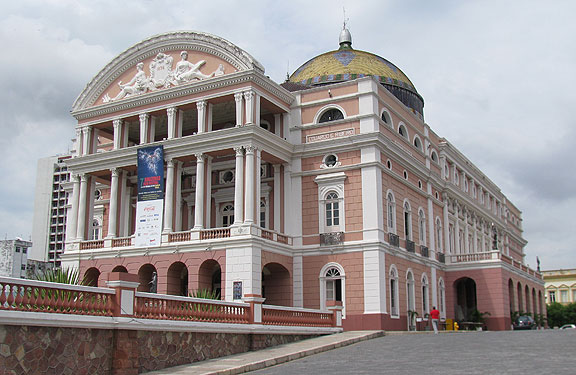
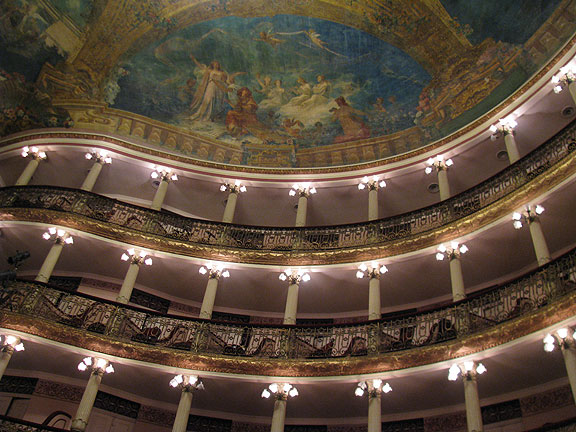

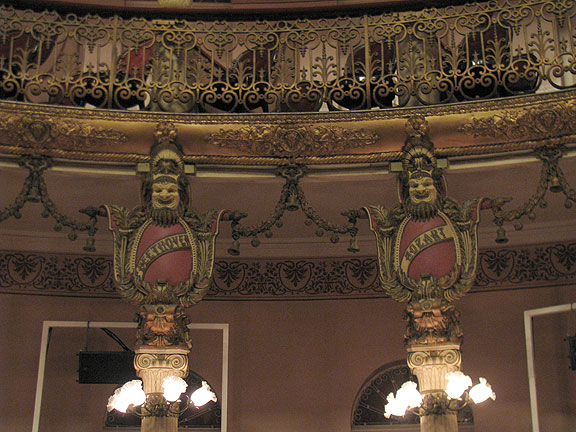
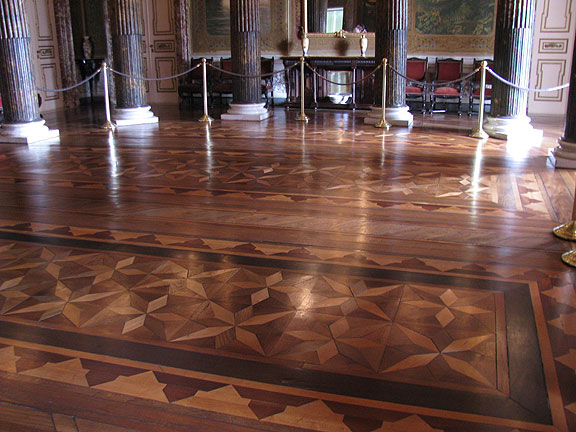
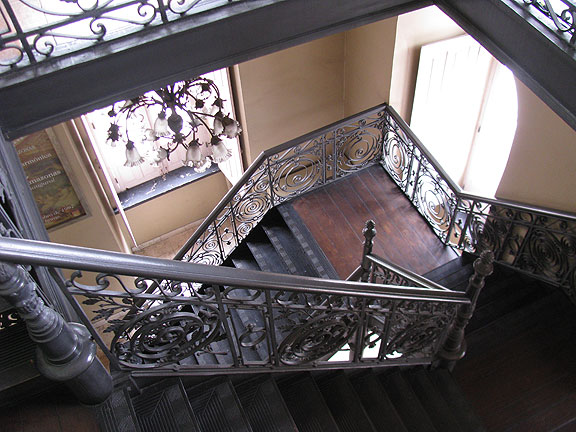
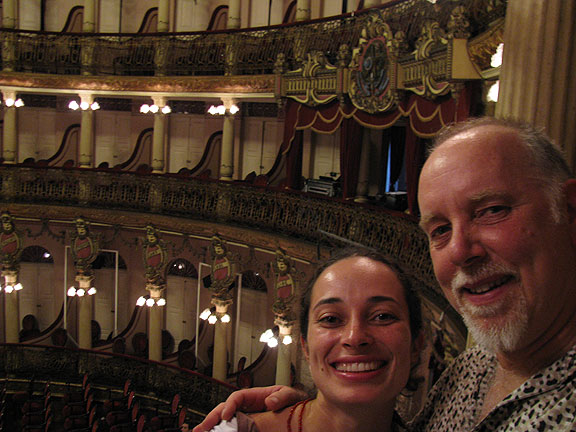











Hey Chris,
Such amazing descriptions! Such an incredible trip!
Thanks for sharing.
Greetings from rainy and misty and foggy Portland,
Tina
Chris, that is an amazing description of our journey, thank you!
An MAN, you were registering everything! You are crazy!
Big Utah snowing hug,
Edgard.